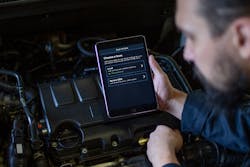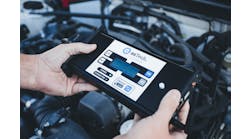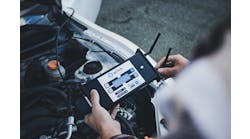Vehicle technology is developing at a rapid pace and many collision repair shops are struggling to keep up. We sat down with Cris Hollingsworth, President of Repairify Holdings, to talk about the challenges shops are facing and the solutions they can implement.
FenderBender: How is the advancement of technology in cars creating challenges for shops?
Cris Hollingsworth: With the number of electronic components in a vehicle today being about 55%, I like to say you’re not really driving a car, you're really driving a sophisticated system of computer modules that is a mobility device. That makes the repair process so much more complex.
Twenty years ago, if you had a car in your shop you would go out and you look at the car mechanically and see what is physically broken. Today, that's not the way you fix a car. You need to connect to the vehicle and basically ask it, “how are you feeling?” This is so you can properly diagnose it.
New developments on vehicles are happening so fast, it's tough for technicians to keep up. They’re basically tasked with 40-50 hours a week at a day job, and then another 10-15 hours learning how to keep up with the vehicles. That's tough. So that's where our technology helps a great deal.
FB: Can you tell us more about the technologies that shops are investing in to tackle these problems?
CH: If you're going to diagnose the vehicle, I think it comes down to 3 choices for shops today.
The first is if you want to diagnose the vehicle based on how the original equipment (OE) manufacturer built the car, then you would need an OE tool for every make, model, and trim level of car that you're going to service. And the OE tool is the gold standard, because it’s going to give you the most complete answer every time.
Now, if you're a shop that is willing to take any brands, you could have 28 to 40 different OEs coming through your door. So that’s going to be a couple hundred thousand dollars’ worth of tools that you need to invest in.
The second option is to buy an OEM-compatible aftermarket tool. The challenge there is that it's not the OE tool, so it's not the exact tool. And because it’s not the OE tool you're not getting the most recent updates until much later. Aftermarket tools take sometimes up to two years to update after the OEM releases the tool.
Your third option is to leverage a remote service provider, such as asTech. Your technician connects a single device to the vehicle, and using our service you’re able to connect to our team, which has all of the OE and aftermarket tools and can route you to the data you need. asTech goes one step further because we actually provide the remote OEM scanning service on your behalf, with the benefit of a certified ASE or I-CAR master technician as your trusted expert and guide.
So, we are setting up shops with access to 1,000 or more OE tools without the major financial investment or the need to purchase multiple tools. Plus, they get access to a remote expert, which takes pressure off of your techs to keep up with every bit of knowledge and eliminates the need for shops to have an onsite calibration technician, which can be hard to find in our current technician shortage.
FB: asTech recently announced that it has been integrated in CCC ONE®. How is being integrated into the CCC® Diagnostics network helping shops in their workflow?
CH: CCC is definitely the largest player when it comes to writing estimates and shop management systems; being able to seamlessly integrate scan data from our device into the CCC system is a game changer. In no time at all repairers now have information they need in the workfile used to manage the repair. Not only does it save time, but it eliminates the potential for human error that comes with transferring data manually. And integrating asTech and CCC doesn’t require a physical connection; you can easily connect them wirelessly.
FB: It seems like a perfect solution for anyone who has found implementing new processes in their shop daunting. What has been the response from you customers since announcing the collaboration with CCC?
CH: The response from our newly connected CCC customers has been overwhelmingly positive and it’s showing up in our numbers. So, it is definitely a hit.
Learn more about the asTech integration with CCC at astech.com/CCC.



